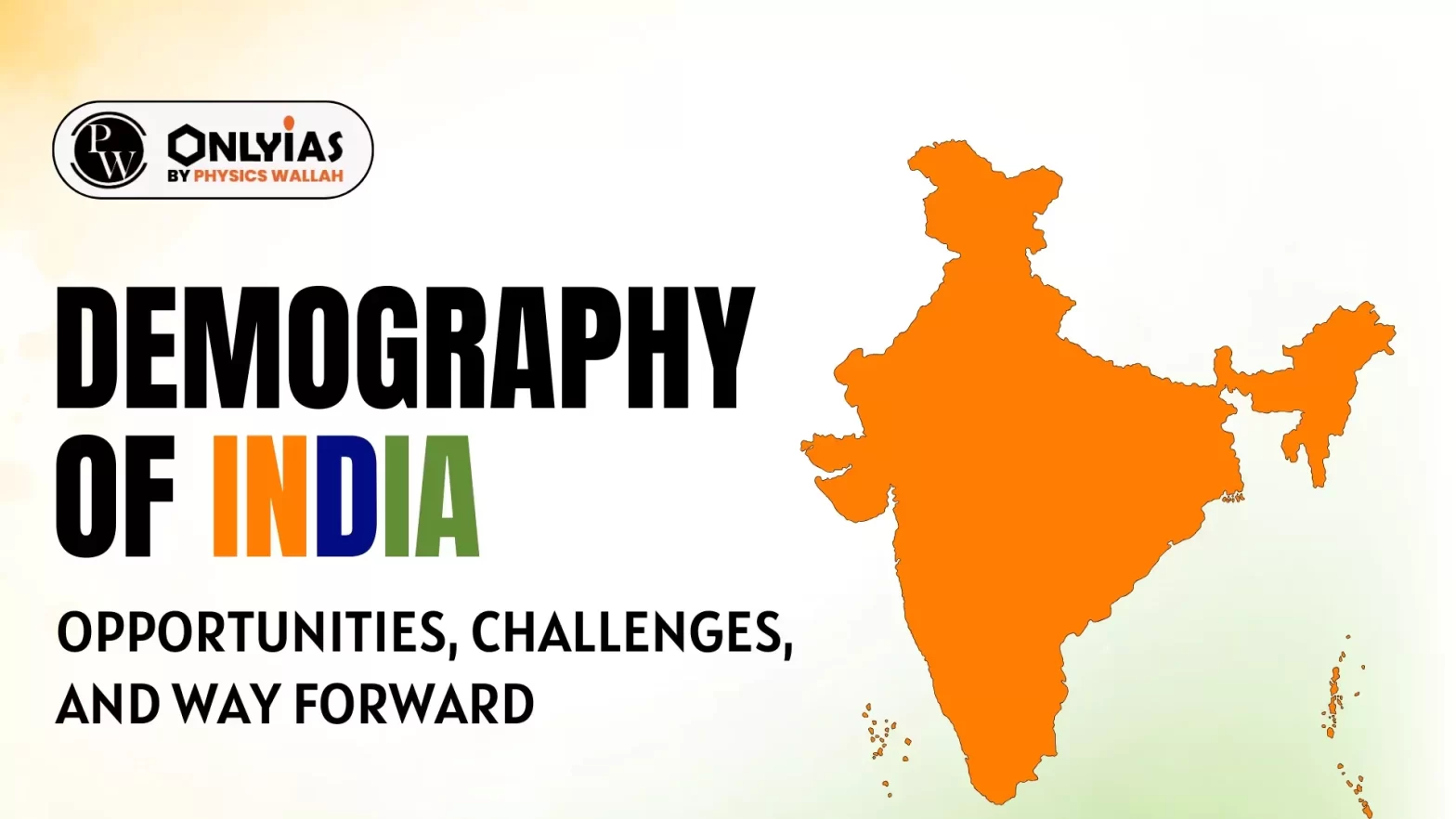Context:
This editorial is based on the news “Population priorities: On Interim Budget statement and the Census” which was published in the Hindu. Recently, the Finance Minister of India presented an interim budget and said that a high-powered committee will be constituted to consider the challenges arising from “fast population growth and demographic changes”.
Demography of India and Recent Changes
- Definition: Demography is the study of human populations, and demographic change is about how human populations change over time. It encompasses various aspects like population size, composition (age, ethnicity, gender), and gender distribution.
- Statistics: It is evident that India is now the most populous country, but the Sample Registration System statistical report in 2020 and the National Family Health Survey-5 (2019-21) have shown that the total fertility rate (TFR) in India has fallen to 2 overall.
- Only a few States- Bihar (2.98), Meghalaya (2.91), Uttar Pradesh (2.35), Jharkhand (2.26) and Manipur (2.17) having a TFR above 2.1.
- India’s Population Growth Trend: According to the National Family Health Survey-5 for 2019-2021, total fertility rate declined from 2.2% to 2% in comparison to the last survey held in 2015-16.
- Demography of India and Its Comparison with Global Statistics: India, the most populous country, covers 2.4% of the global surface area and holds more than 18% of the world’s population.
- Youthful Demography of India: As per the World Population Review report, the median age in India is 28 years, which is much younger than China (38 years), Japan (48 years) & US (38 years).
- Working Population: The share of the working population has grown from 50% to 65%.
- Sex Ratio: By 2022, it is expected to be approximately 950 females per 1,000 males.
- Life Expectancy: In 1947, it was 32 years but in 2019 it went up to 70 years.
- Infant Mortality Rate: Declined from 133 in 1951 to 27 in 2020.
- Global Hunger Index: India stands 101 out of 116 nations.
- Progress of the Southern States: The population share of the southern States, reduced to 21% in 2011 from 26% in 1951, mainly due to rapid reduction in TFR due to better socio-economic outcomes and education, and despite higher migration to these States.
- Concern: The Census has not been conducted for the first time in a decade since 1881.
Factors Affecting Demography of India
- Natural Factors: Birth rate, death rate, migration etc.
- Public Policy: Such as Family policy, immigration policy, health policy, education policy, etc.
- Environmental Factors: Environmental factors and demography influence each other.
Demographic Dividend of India
- Definition: It refers to the growth in an economy. This typically happens due to declining birth rates and mortality rates, leading to a larger proportion of the population being in the working age group (15-64 years old) compared to the dependent groups (children and elderly).
- Required Conditions: Decline in Fertility Rates and Improved Healthcare and Mortality Rates.
- Challenges for Demographic Dividend of India: Unemployment Issue, low human development, gender imbalance, healthcare and inequality and Educational Disparity.
Implications of Changing Demography of India
- Economic Implications: High immigration can boost the workforce but it is a burden on the economy if they are not skilled and changing household composition and age structures can shift consumer spending patterns.
- Social Implications: Changing demography of India can influence family sizes, impacting social norms and expectations and increased migration can lead to greater cultural diversity.
- Political Implications: Rapid demographic changes or perceived inequalities can contribute to social unrest and political instability. Also, changing demography might shift political representation and voting patterns, potentially influencing policy priorities.
Way Ahead to Demography of India
- Need to improve Education Standards.
- Need to improve Healthcare Requirements.
- Time to bridge Gender Gaps.
- Situation-based Approach in States is the need of the hour.
Conclusion
The “high-powered” committee will be performing a crucial role if it engages meaningfully in addressing questions related to jobs and social security and the challenges citizens face due to rapid urbanisation and mechanisation of work.
![]() 3 Feb 2024
3 Feb 2024

